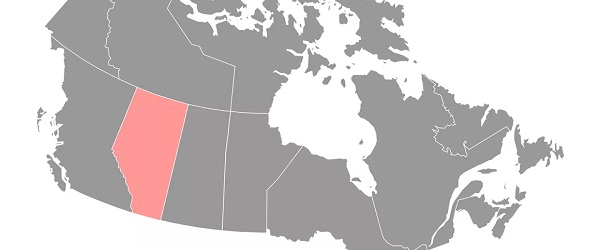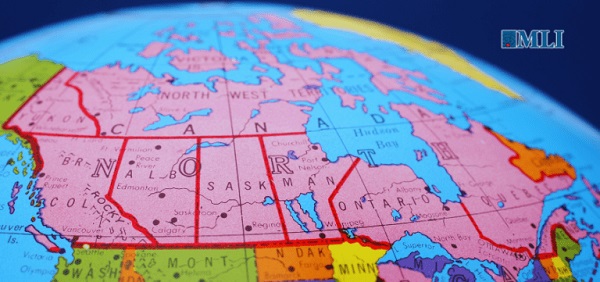Alberta
Canada’s Premiers beginning to back Canadian energy

News release from Project Confederation
Alberta Premier Danielle Smith was on a mission last week and had three things on her mind: energy, energy, energy.
The interesting thing is, many of the other provinces now seem to be on the same page too.
Energy is a policy area that has always been a flashpoint for trouble for the federal government and we’ve seen an ever-increasing number of disputes developing in recent years, deteriorating interprovincial relations and creating constitutional struggles.
The most recent argument started last Friday when Premier Smith met with Prime Minister Justin Trudeau in Calgary to talk about – you guessed it! – energy policy.
Trudeau has announced several ambitious climate policies that will drive energy costs up.
These include aggressive net-zero emissions electricity targets that are going to make power at least 40% more expensive, cost $52 billion for infrastructure alone, and another $35 billion in economic activity.
They’ve also announced an emissions cap on the oil and gas sector in western Canada – which is effectively a production cap, limiting the ability of producers to up their production in order to meet rising global demand.
Smith isn’t going along with these destructive policies.
Natural resource development is the sole jurisdiction of the provinces, not the federal government, and Smith says that Alberta will not be a doormat for federal climate policies that are going to decimate its economy.
She made it clear she will do whatever is necessary to protect Alberta’s interests.
After this bout with Trudeau, she headed out to Winnipeg for the 2023 Summer Meeting of Canada’s Premiers.
Once again, Smith hammered on Ottawa’s aggressive targets and the impact they will have on the economies of the federation – not just Alberta.
Next, she headed to the LNG2023 Conference in Vancouver, looking to establish new export markets for Alberta’s Liquefied Natural Gas (LNG) – a major source of tension between the federal government and the provinces.
Smith pointed out that Western Canada wants the ability to export LNG to fulfill rising global demand, a resource that Canada has in abundance:
“With the right infrastructure in place, Western Canada would become a sought-after supplier for both Asia and Europe.”
Notably, federal Natural Resources Minister Jonathan Wilkinson didn’t even show up to the conference, instead sending Tourism Minister Randy Boissonnault.
Perhaps most importantly though, Alberta no longer stands alone.
The federal government has intruded so much into provincial jurisdiction on so many issues, that more and more provinces are pushing back.
At the start of her trip, Smith predicted that she would have a few allies.
“I can tell you the thing that has surprised me the most is that it doesn’t matter what political stripe the premiers have, every single one of them is frustrated with federal interference into their business,” she said.
She was right.
The Council of Premiers made it clear that they weren’t happy being force-fed aggressive deadlines that were going to decimate the Canadian economy.
Scott Moe, Premier of Saskatchewan, publicly called out the Prime Minister and Steven Guilbeault, federal Minister of Environment and Climate Change, tweeting:
“If it wasn’t clear before, it is now. The Trudeau government doesn’t want to just reduce emissions in our energy sector, they want to completely shut down our energy sector.”
Blaine Higgs, the Premier of New Brunswick added:
“It just seems to be a pile-on of additional costs, Let’s get some recognition for the impact this is having on everyday lives.”
Even David Eby’s NDP government in British Columbia is joining in and are looking at ways to grow LNG exports with the recent establishment of a task force with a mandate to explore export expansion opportunities.
If there is one thing that this past week and a half did demonstrate is that when it comes to energy, the provinces have never been more united against a federal government that continues to overstep its jurisdictional boundaries.
This level of agreement amongst premiers is a major step forward, and it demonstrates that common ground can be found between provinces when it comes to federal overreach.
It is also important because it demonstrates that the rest of the country is getting fed up with the never-ending climate brigade taking shot after shot after shot at the energy industry without addressing the impact energy has on affordability.
Some time ago, we launched a campaign to Stand Up for Alberta Energy.
If you agree with our work in this area, and want to get more involved with the campaign, please join the campaign here:
2025 Federal Election
Next federal government should recognize Alberta’s important role in the federation

From the Fraser Institute
By Tegan Hill
With the tariff war continuing and the federal election underway, Canadians should understand what the last federal government seemingly did not—a strong Alberta makes for a stronger Canada.
And yet, current federal policies disproportionately and negatively impact the province. The list includes Bill C-69 (which imposes complex, uncertain and onerous review requirements on major energy projects), Bill C-48 (which bans large oil tankers off British Columbia’s northern coast and limits access to Asian markets), an arbitrary cap on oil and gas emissions, numerous other “net-zero” targets, and so on.
Meanwhile, Albertans contribute significantly more to federal revenues and national programs than they receive back in spending on transfers and programs including the Canada Pension Plan (CPP) because Alberta has relatively high rates of employment, higher average incomes and a younger population.
For instance, since 1976 Alberta’s employment rate (the number of employed people as a share of the population 15 years of age and over) has averaged 67.4 per cent compared to 59.7 per cent in the rest of Canada, and annual market income (including employment and investment income) has exceeded that in the other provinces by $10,918 (on average).
As a result, Alberta’s total net contribution to federal finances (total federal taxes and payments paid by Albertans minus federal money spent or transferred to Albertans) was $244.6 billion from 2007 to 2022—more than five times as much as the net contribution from British Columbians or Ontarians. That’s a massive outsized contribution given Alberta’s population, which is smaller than B.C. and much smaller than Ontario.
Albertans’ net contribution to the CPP is particularly significant. From 1981 to 2022, Alberta workers contributed 14.4 per cent (on average) of total CPP payments paid to retirees in Canada while retirees in the province received only 10.0 per cent of the payments. Albertans made a cumulative net contribution to the CPP (the difference between total CPP contributions made by Albertans and CPP benefits paid to retirees in Alberta) of $53.6 billion over the period—approximately six times greater than the net contribution of B.C., the only other net contributing province to the CPP. Indeed, only two of the nine provinces that participate in the CPP contribute more in payroll taxes to the program than their residents receive back in benefits.
So what would happen if Alberta withdrew from the CPP?
For starters, the basic CPP contribution rate of 9.9 per cent (typically deducted from our paycheques) for Canadians outside Alberta (excluding Quebec) would have to increase for the program to remain sustainable. For a new standalone plan in Alberta, the rate would likely be lower, with estimates ranging from 5.85 per cent to 8.2 per cent. In other words, based on these estimates, if Alberta withdrew from the CPP, Alberta workers could receive the same retirement benefits but at a lower cost (i.e. lower payroll tax) than other Canadians while the payroll tax would have to increase for the rest of the country while the benefits remained the same.
Finally, despite any claims to the contrary, according to Statistics Canada, Alberta’s demographic advantage, which fuels its outsized contribution to the CPP, will only widen in the years ahead. Alberta will likely maintain relatively high employment rates and continue to welcome workers from across Canada and around the world. And considering Alberta recorded the highest average inflation-adjusted economic growth in Canada since 1981, with Albertans’ inflation-adjusted market income exceeding the average of the other provinces every year since 1971, Albertans will likely continue to pay an outsized portion for the CPP. Of course, the idea for Alberta to withdraw from the CPP and create its own provincial plan isn’t new. In 2001, several notable public figures, including Stephen Harper, wrote the famous Alberta “firewall” letter suggesting the province should take control of its future after being marginalized by the federal government.
The next federal government—whoever that may be—should understand Alberta’s crucial role in the federation. For a stronger Canada, especially during uncertain times, Ottawa should support a strong Alberta including its energy industry.
Alberta
Province announces plans for nine new ‘urgent care centres’ – redirecting 200,000 hospital visits

Expanding urgent care across Alberta
If passed, Budget 2025 includes $17 million in planning funds to support the development of urgent care facilities across the province.
As Alberta’s population grows, so does the demand for health care. In response, the government is making significant investments to ensure every Albertan has access to high-quality care close to home. Currently, more than 35 per cent of emergency department visits are for non-life-threatening conditions that could be treated at urgent care centres. By expanding these centres, Alberta’s government is enhancing the health care system and improving access to timely care.
If passed, Budget 2025 includes $15 million to support plans for eight new urgent care centres and an additional $2 million in planning funds for an integrated primary and urgent care facility in Airdrie. These investments will help redirect up to 200,000 lower-acuity emergency department visits annually, freeing up capacity for life-threatening cases, reducing wait times and improving access to care for Albertans.
“More people are choosing to call Alberta home, which is why we are taking action to build capacity across the health care system. Urgent care centres help bridge the gap between primary care and emergency departments, providing timely care for non-life-threatening conditions.”
“Our team at Infrastructure is fully committed to leading the important task of planning these eight new urgent care facilities across the province. Investments into facilities like these help strengthen our communities by alleviating strains on emergency departments and enhance access to care. I am looking forward to the important work ahead.”
The locations for the eight new urgent care centres were selected based on current and projected increases in demand for lower-acuity care at emergency departments. The new facilities will be in west Edmonton, south Edmonton, Westview (Stony Plain/Spruce Grove), east Calgary, Lethbridge, Medicine Hat, Cold Lake and Fort McMurray.
“Too many Albertans, especially those living in rural communities, are travelling significant distances to receive care. Advancing plans for new urgent care centres will build capacity across the health care system.”
“Additional urgent care centres across Alberta will give Albertans more options for accessing the right level of care when it’s needed. This is a necessary and substantial investment that will eventually ease some of the pressures on our emergency departments.”
The remaining $2 million will support planning for One Health Airdrie’s integrated primary and urgent care facility. The operating model, approved last fall, will see One Health Airdrie as the primary care operator, while urgent care services will be publicly funded and operated by a provider selected through a competitive process.
“Our new Airdrie facility, offering integrated primary and urgent care, will provide same-day access to approximately 30,000 primary care patients and increase urgent care capacity by around 200 per cent, benefiting the entire community and surrounding areas. We are very excited.”
Alberta’s government will continue to make smart, strategic investments in health facilities to support the delivery of publicly funded health programs and services to ensure Albertans have access to the care they need, when and where they need it.
Budget 2025 is meeting the challenge faced by Alberta with continued investments in education and health, lower taxes for families and a focus on the economy.
Quick facts
- The $2 million in planning funds for One Health Airdrie are part of a total $24-million investment to advance planning on several health capital initiatives across the province through Budget 2025.
- Alberta’s population is growing, and visits to emergency departments are projected to increase by 27 per cent by 2038.
- Last year, Alberta’s government provided $8.4 million for renovations to the existing Airdrie Community Health Centre.
Related information
-

 Business22 hours ago
Business22 hours ago28 energy leaders call for eliminating ALL energy subsidies—even ones they benefit from
-

 2025 Federal Election23 hours ago
2025 Federal Election23 hours agoCarney’s Cap on Alberta Energy Costing Canada Billions
-

 Business1 day ago
Business1 day agoTrump Tariffs are not going away. Canada needs to adapt or face the consequences
-

 Economy16 hours ago
Economy16 hours agoSupport For National Pipelines And LNG Projects Gain Momentum, Even In Quebec
-

 Health20 hours ago
Health20 hours agoDr. Pierre Kory Exposes the Truth About the Texas ‘Measles Death’ Hoax
-

 Economy17 hours ago
Economy17 hours agoSolar and Wind Power Are Expensive
-

 Business19 hours ago
Business19 hours agoAll party leaders must oppose April 1 alcohol tax hike
-

 Business18 hours ago
Business18 hours agoWhy a domestic economy upgrade trumps diversification
